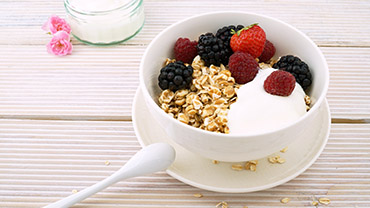Should we be cutting our carbs as a lot of fad diets are preaching?
The Role of Carbohydrates
Carbohydrates are our bodies most readily available source of energy. They also have a huge impact on the blood glucose and insulin levels in our bodies. In addition, they affect our cholesterol, assist in satiety (feeling full) and gastric emptying.
Carbohydrates are broken down by the digestion process to produce glucose and other simple sugars. These are used by the body to meet our energy needs. However, once the energy needs are met, the glucose is converted to fatty acids and stored, thus leading to weight gain! So if you aren't burning the equivalent energy as what you are consuming from carbs, then maybe it is time to cut down!
Before we do charge off and cut out all our carbs in an effort to reduce weight, let’s look at the different types of carbs and the effects they have on our bodies.
The Good
Low GI
One of the buzz phrases over the past decade or so has been ‘low GI’. The carbs with low GI are actually the good guys! When you eat carbs, it will cause an increase in blood sugar levels which will then return to fasting levels over a period of time. Low GI (glycemic index) refers to a smaller spike in blood sugar levels and a more gradual return to fasting levels. The effect that this has on your body is that it will increase the feeling of satiety and insulin levels are more regulated. Foods that have a low GI include: bananas, oranges, apples, carrots, sweet potatoes, green peas, peanuts, lentils, mixed-grain breads, baked beans, spaghetti and oats.
Fibre
Fibre is the indigestible part of plant foods and greatly aids in the digestive process. It is either soluble or insoluble.
Soluble fibre (found in fruits, vegetables, oat bran, barley, seed husks, flaxseed, psyllium, dried beans, lentils, peas, soy milk and soy products) helps to slow the emptying process in the stomach, providing an increased level of satiety. It also helps to lower cholesterol and stabilise the blood glucose levels.
Insoluble fibre (found in wheat bran, corn bran, rice bran, the skins of fruits and vegetables, nuts, seeds, dried beans and wholegrain foods) absorbs water to help to soften the contents of the bowels and supports regular bowel movements.
Read more: Fiber for Heart Health
The Bad (well, sometimes!)
Foods with a high GI cause a very quick spike in glucose levels in the blood followed by a quick drop in levels to return to the fasting levels. This causes us to feel hungry in a shorter period of time than if eating low GI foods. This can lead to overeating particularly of the wrong types of foods.
Foods that have a high GI include: potatoes, rice, wholemeal bread, doughnuts, lamingtons and glucose.
By having a mix of high and low GI foods, you can limit the negative effects of consuming high GI foods. For example, if you are having potatoes with your meal, make sure you have some carrots and peas as well.
The Ugly
So, while foods with a high GI may not help keep you satisfied for long and you find yourself looking for more food sooner, there may still be nutritional benefits to keeping them in your diet, particularly if you follow the advice of pairing them with low GI foods. On the really bad end of the scale though is: sugar! Foods that contain natural sugars are usually not as bad as they will contain other nutrients that are beneficial to our health or components that reduce the overall GI of the food.
The ‘ugly’ component here are the added, particularly, refined sugars. These provide empty calories and have little or no nutritional value at all. You will find these sugars in many processed foods such as cereals, biscuits, cakes, sauces etc. In fact, these days, there are very few cereals that do not have added sugar!
Sugars in foods can be recognised by the following on the ingredients label: sucrose, fructose, maltose, lactose… pretty much anything ending ‘ose’!
While maple syrup and honey may be ‘natural’ sweeteners, they are still high in sugar. Sometimes though, it is about choosing the lesser of the evils, as well as the fact that with maple syrup and honey there are good nutrients along with the sugar.
You also need to beware of fruit juices! While the fruit itself may have a low GI, once it is juiced, the fibre content is removed, thus increasing its GI and sugar level.
The verdict - should we cut carbs?
In my opinion, no we shouldn't! Sure, we should cut the processed carbs and those foods that are made from them, but the fruits and vegetables contain essential nutrients that we need. As long as you are not overloading on carbs with a sedentary lifestyle, there shouldn't be any need eliminate carbs from your diet!




